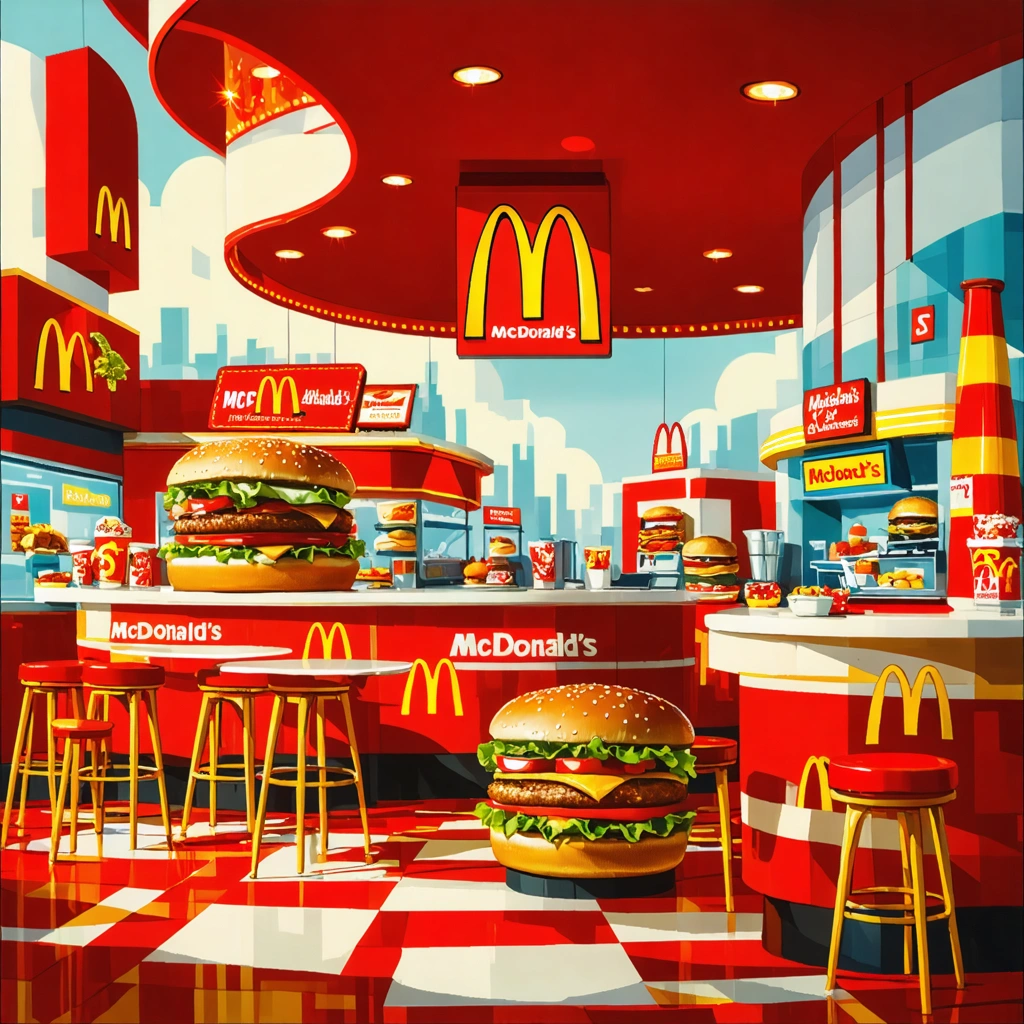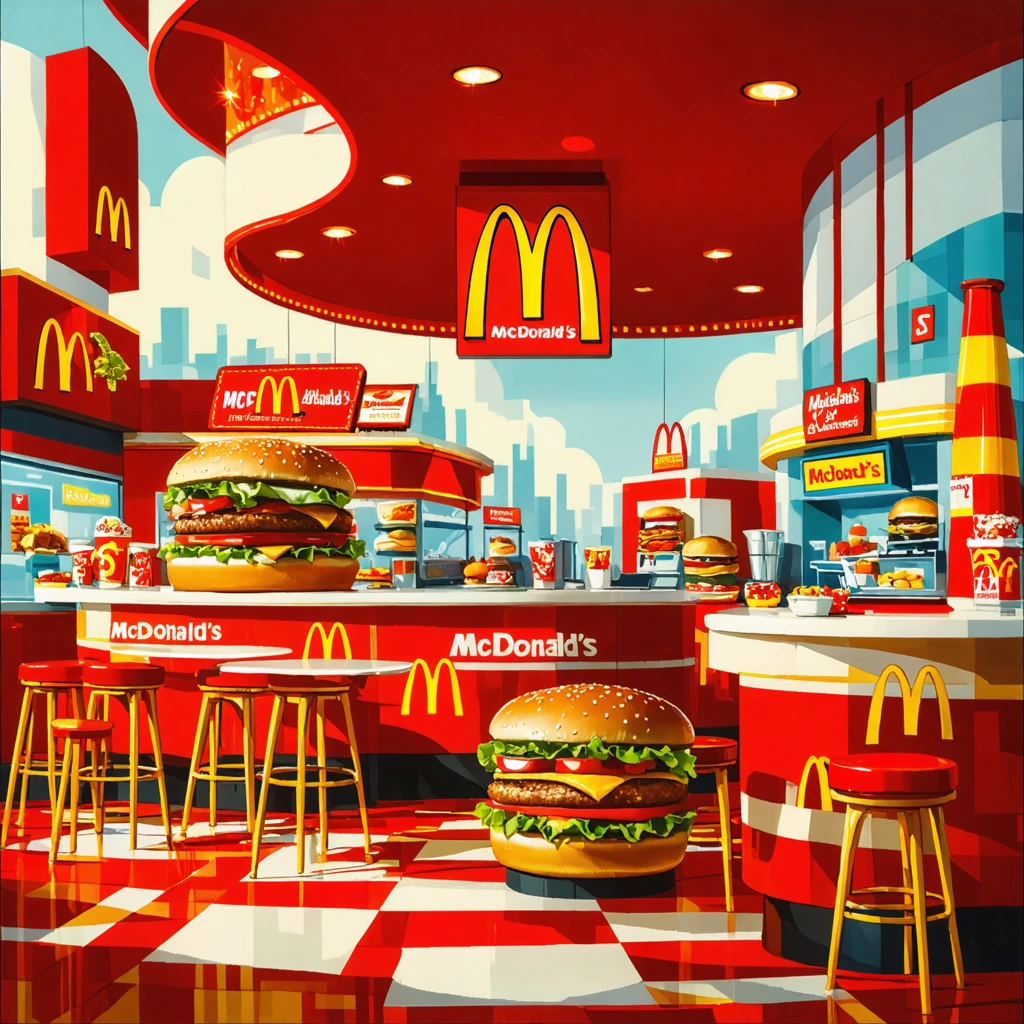McDonald’s Mascots: A Nostalgic Marketing Legacy: McDonald’s mascots like Hamburglar and Grimace evoke nostalgia while driving brand loyalty.

The Enduring Charm of McDonald’s Mascots
Think back to your childhood memories of bright colors, catchy jingles, and those playful characters that populated the world of McDonald’s. For many, the sight of the McDonald’s Hamburglar or the goofy, lovable Grimace sparks an immediate sense of nostalgia—those mascots weren’t just cartoon figures; they were companions to countless happy moments. But why do these characters, from the mischievous Hamburglar to the friendly Ronald McDonald, continue to hold such a magnetic appeal decades after their creation? And how have these figures helped McDonald’s maintain a unique and powerful connection with generations of customers?
McDonald’s mascots have been more than simple marketing tools; they’ve become cultural icons, weaving themselves into the fabric of pop culture and childhood memories alike. Yet, in today’s fast-evolving marketing landscape, where digital campaigns and influencer partnerships dominate, the role and effectiveness of these classic characters sometimes come into question. Are the McDonald’s Hamburglar and other beloved characters still relevant? How do they contribute to brand loyalty in a world saturated with advertising noise? This article delves into the fascinating legacy of all McDonald’s characters, exploring how these mascots have shaped—and continue to shape—the brand’s identity and emotional appeal.
Why Do McDonald’s Mascots Matter So Much?
Modern consumers, especially younger generations, are bombarded with countless marketing messages daily. In such a crowded space, standing out is no easy feat. The McDo mascot lineup, featuring the Hamburglar, Grimace, Mayor McCheese, and others, offers something unique: a bridge to the past that feels both comforting and fun. But it’s not just about nostalgia for nostalgia’s sake. These characters tap into deeper emotional connections, evoking feelings of joy, trust, and familiarity.
Take the Hamburglar, for instance. Known for his cheeky attempts to “steal” hamburgers, this character’s antics made him an endearing figure rather than a villain. The playful nature of the Hamburglar helped humanize the brand, making the experience of visiting McDonald’s more than just a meal—it became a memorable adventure, especially for kids. But the Hamburglar isn’t alone; the entire ensemble of McDonald’s characters builds a world that customers can relate to, creating an immersive brand experience.
The Challenge: Maintaining Relevance in a Changing World
Yet, the challenge remains: how does a brand keep its mascots relevant without losing the essence of what made them beloved in the first place? Over the years, McDonald’s has experimented with the portrayal and presence of these characters, sometimes scaling back their visibility and at other times modernizing them to fit contemporary tastes. The McDonald’s Hamburglar, for example, underwent several redesigns—from his classic striped outfit and mask to a more modern look in recent campaigns.
However, these changes have sparked debate among fans and marketers alike. Does updating the mascots risk alienating longtime fans, or is it necessary to attract new generations? Balancing nostalgia with innovation is a delicate act, especially when the mascots represent more than just marketing—they embody decades of brand stories and emotional ties.
What This Article Will Cover
In the following sections, we’ll take a closer look at:
- The history and evolution of McDonald’s mascots, focusing on iconic figures like the McDonald’s Hamburglar and Grimace.
- How these characters have been used strategically to build brand loyalty and evoke nostalgia among diverse audiences.
- The impact of mascot redesigns and modern marketing trends on the perception of McDonald’s characters today.
- Why the magic of these mascots endures and what lessons other brands can learn from their legacy.
Whether you’re a marketing enthusiast, a fan of retro pop culture, or simply curious about the magic behind the McDo mascot lineup, this exploration of all McDonald’s characters promises fresh insights and a dash of nostalgia. So, let’s dive into the world where hamburgers meet hijinks, and mascots become legends.

McDonald’s Mascots: A Nostalgic Marketing Legacy
Who are McDonald's mascots and why are they important?
McDonald's mascots, such as the iconic Hamburglar and Grimace, have played a pivotal role in the brand’s marketing strategy for decades. These characters are more than just playful figures; they serve as emotional connectors that evoke nostalgia while building strong brand loyalty across generations.
The use of mascots like the Hamburglar—often mistakenly spelled “Hamburgler”—and Grimace helps create a memorable brand identity that appeals not only to children but also to adults who grew up with these characters. This emotional attachment encourages repeat visits and fosters a sense of community around McDonald’s.
Who is the McDonald’s Hamburglar and what makes him memorable?
The McDonald’s Hamburglar is a mischievous character introduced in the early 1970s as part of the McDonaldland universe. Recognizable by his black-and-white striped outfit and signature hat, the Hamburglar’s playful persona involves “stealing” hamburgers, making him a fun and engaging figure for children.
His appeal lies in the balance between being a “villain” and a lovable character, which adds a layer of storytelling to McDonald’s advertising. This storytelling approach helps embed the Hamburglar deeply into popular culture, making him one of the most enduring McDonald’s characters to date.
What are all McDonald’s characters and how do they contribute to the brand?
Besides the Hamburglar and Grimace, the McDonald’s mascot lineup includes characters like Ronald McDonald, Mayor McCheese, Birdie the Early Bird, and the Fry Kids. Each character was designed to personify different aspects of the McDonald’s experience, from fun and friendliness to community and innovation.
- Ronald McDonald: The primary mascot symbolizing happiness and friendliness.
- Grimace: A large, purple, friendly character representing the joy of McDonald’s shakes and soft drinks.
- Mayor McCheese: A whimsical character symbolizing leadership within the McDonaldland universe.
- Birdie the Early Bird: Introduced to promote breakfast items.
- Fry Kids: Small, colorful characters representing McDonald’s French fries.
Together, all McDonald’s characters have created a rich, imaginative world that engages customers of all ages, enhancing brand recall through storytelling.
How has the McDonald’s mascot strategy evolved over time?
Initially, McDonald’s mascots were heavily featured in television commercials, merchandise, and even themed play areas. Over time, the approach shifted due to changing marketing trends and consumer preferences. The focus moved towards Ronald McDonald as the flagship mascot, while other characters took a backseat.
However, nostalgia marketing has seen a resurgence of interest in these mascots. McDonald’s has leveraged this by reintroducing characters like the Hamburglar in recent campaigns to tap into the emotional connection of older audiences, while still appealing to younger customers through digital content and limited-edition merchandise.
Why do McDonald’s mascots drive brand loyalty?
Brand loyalty driven by McDonald’s mascots stems from their ability to create personal and emotional connections. Because these mascots appear repeatedly in advertising and cultural references, they become symbols of positive childhood memories and family experiences associated with McDonald’s.
Research in marketing psychology shows that nostalgic marketing can increase customer retention by up to 50%. McDonald’s mascots, especially the Hamburglar and Grimace, tap into this effect by evoking fond memories, which motivates consumers to remain loyal and choose McDonald’s over competitors.
What impact do McDonald’s mascots have on marketing effectiveness?
McDonald’s mascots have been a significant factor in the brand’s global marketing success. Their distinct personalities and stories make advertisements more engaging and memorable, which improves brand recall. Additionally, these mascots often serve as ambassadors for promotions, new product launches, and community initiatives.
Case studies show that campaigns featuring nostalgic characters like the Hamburglar see higher engagement rates on social media platforms and better performance in sales metrics. For example, McDonald’s limited-time Hamburglar-themed merchandise and digital games have created buzz and driven foot traffic to restaurants.
How can brands learn from McDonald’s use of mascots?
The McDonald’s example demonstrates the power of creating relatable and enduring characters to build emotional connections with customers. Key lessons include:
- Consistency: Maintain mascots over long periods to build familiarity and attachment.
- Storytelling: Use characters to tell engaging stories that resonate with audiences.
- Nostalgia: Leverage past associations to rekindle emotional responses.
- Adaptation: Refresh mascots to stay relevant to new generations without losing core identity.
By carefully managing their McDo mascot portfolio, McDonald’s has created a lasting marketing legacy that continues to influence consumer behavior worldwide.




